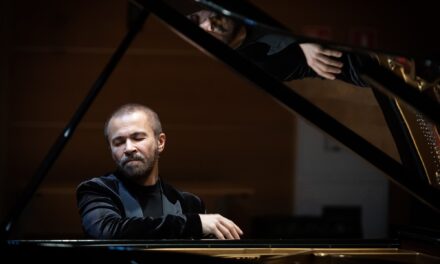This concert at Carol Woods Retirement Community, eagerly anticipated, was a lecture/performance program exploring Beethoven’s Cello Sonatas in conjunction with the release of a new book. Cellist Marc D. Moskovitz and Duke musicologist/pianist R. Larry Todd have written Beethoven’s Cello: Five Revolutionary Sonatas and Their World. Todd, Duke University’s great Mendelssohn scholar, has given many concerts at Carol Woods such as a series of Beethoven’s Violin Sonatas with Katharina Uhde. With these five works for piano and cello, Beethoven invented the modern cello sonata.
Co-author Moskovitz studied with Janos Starker and is an active chamber musician nationally. Besides being principal cellist of the ProMusica Columbus (Ohio) Chamber Orchestra, he directs a private series held in private homes in Durham NC. He has written a biography of Alexander Zemlinsky and numerous scholarly articles about historical cellists for the New Grove Dictionary of Music and Musicians, among others, and program notes for Naxos recordings.
The musicians in turn gave historical background for each sonata before its performance. Todd explained the revolutionary break Beethoven made with his Op. 5, Nos 1-2, Cello Sonatas. While listing “for piano and cello,” even these show a break away from the contemporary model of cello as continuo for the keyboard. These represent the composer’s Early Period with plenty of dramatic contrast along with a fuller use of the cello’s range.
Beethoven’s Cello Sonata No. 3 in A, Op. 69, was composed in 1807-08 and dedicated to Baron Ignaz von Gleichenstein, a skilled amateur cellist and close friend who helped the composer in dealing with his business affairs. It is a perfect example of the composer’s Middle Period. The justly popular work is in three movements: Allegro ma non tanto, Scherzo: Allegro molto, and Adagio cantabile; Allegro vivace. The short 15-measure slow movement leads without break into the brilliant finale.
Todd’s piano lid was on its short stick and the instrument was perfectly balanced with the cello without any loss of color or tone. The baritone range of Moskovitz’s cello was exceptionally rich and ideally displayed in the glorious solo melody that opens the sonata. His intonation, phrasing, and wide palette of color, dynamics, and tone were superbly judged throughout both sonatas. Todd’s articulation and expressive phrasing of melodies was also exceptional. They brought a wonderful sense of spontaneity to their interpretation. Their frenetic scherzo was enthralling. The brief slow melody was spun to perfection before being swept up into the rapturous finale.
Moskovitz explained that Op.102 marks the start of Beethoven’s Late Period, when the deaf composer had settled on a revolutionary approach involving compression, increased intensity, dynamics, dissonance, and full instrumental equality. Cello Sonata No. 4 in C, Op. 102, No. 1, was composed, along with No. 2, in July and August 1815. Because of the burning of Count Rasumovsky’s palace, the composer and cellist Joseph Linke, a former member of Count’s private quartet were summer guests of Countess Maria Erdödy, a fine pianist, at Jedlersee. Its four-movement structure is in what the composer called “free sonata” form with slow introductions merged with faster sections, effectively forming two movements: Andante; Allegro vivace, Adagio; Tempo d’Andante; Allegro vivace.
All the virtues of Moskovitz’s and Todd’s Op. 69 were present in the robust performance of the C Major Sonata. The mercurial, sudden shifts between gentle and furious sections were delivered with aplomb. The composer’s delicious dissonances were brought out effectively. They well-earned their prolonged standing ovation from a large audience of retirees, music lovers, and visiting students.












